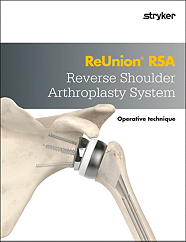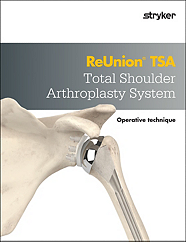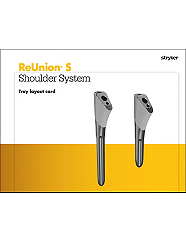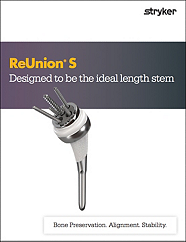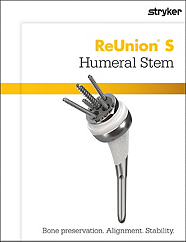ReUnion S
Humeral Stem
For patients that may be considered for shoulder replacement surgery
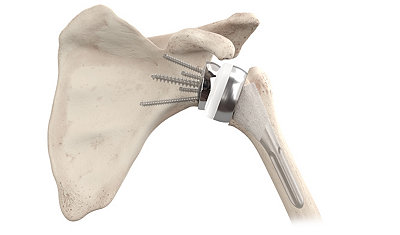
ReUnion S Humeral Stem
Historically, standard length stems in shoulder arthroplasty have had low complication rates.1 There is a growing trend in shoulder arthroplasty toward humeral stem prosthesis designs focused on preserving distal bone by reducing distal stem length. The Stryker Orthopaedic Modeling and Analytics (SOMA) database was utilized to identify the minimum stem length for a stemmed shoulder prosthesis.
The ReUnion S stem is designed to be the ideal length stem, optimizing bone preservation, alignment, and stability.
Bone Preservation: Stem length was determined using our SOMA analysis to identify a humeral transition point and alignment length.2
Alignment: With the transition point identified, our target alignment zone was identified to avoid varus/valgus placement of the stem.2
Stability: The S stem is designed to retain the alignment and stability benefits of a longer humeral stem prosthesis.2
Scientifically determining the ideal length stem
Scientifically determining the ideal stem length: An animation. Learn about humeral length over time and about part of Stryker’s shoulder platform: ReUnion S.
ReUnion S - Innovation Theater Presentation
Dr. Sanchez-Sotelo presents "The Science behind humeral stem length in shoulder arthroplasty" during the Innovation Theater.
Anatomic Shoulder Arthroplasty for Primary Glenohumeral Osteoarthritis
Anatomic Shoulder Arthroplasty for Primary Glenohumeral Osteoarthritis performed by Dr. Sanchez-Sotelo and moderated by Dr. McFarland
ReUnion S - designed to be the ideal length stem
The ReUnion S stem is designed to be the ideal length stem, optimizing bone preservation, alignment, and stability.
1) Gilot G et al., The incidence of radiographic aseptic loosening of the humeral component in reverse total shoulder arthroplasty. J Shoulder Elbow Surg. 2015 Oct;24(10):1555-9.
2) RU-WP-3: Analysis of humeral morphology as it relates to stem length
RU-AWI-3, 03-2019

